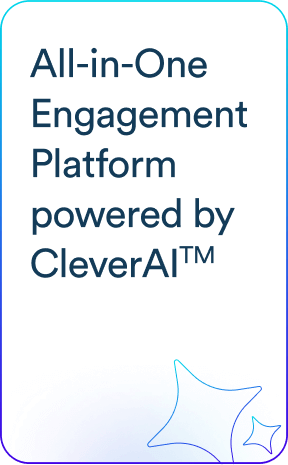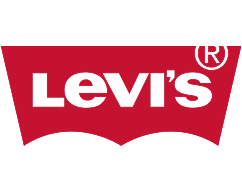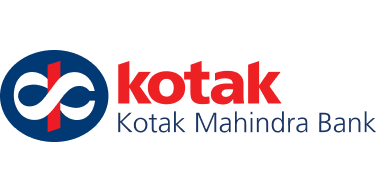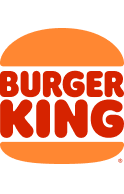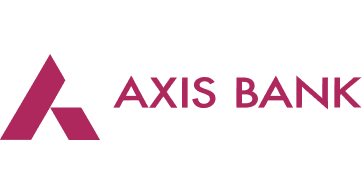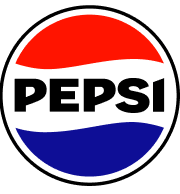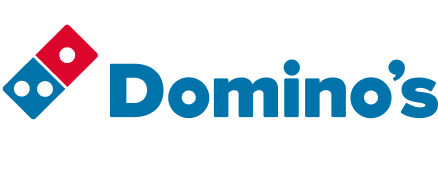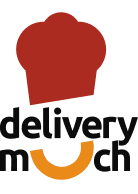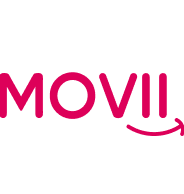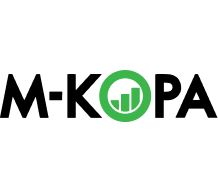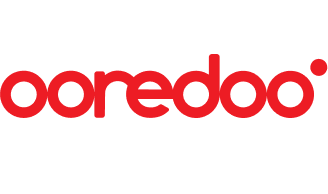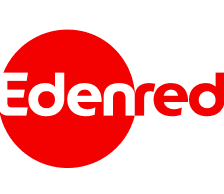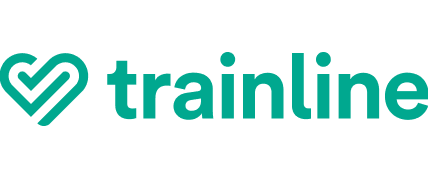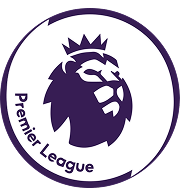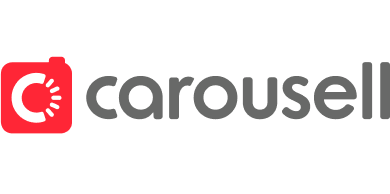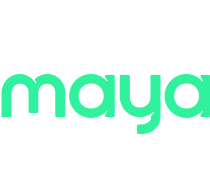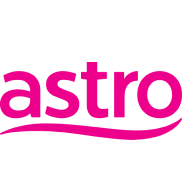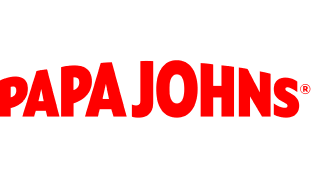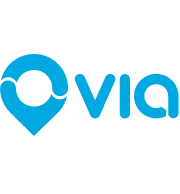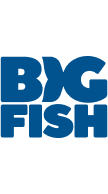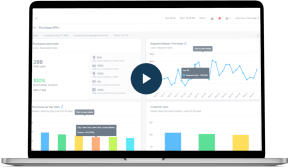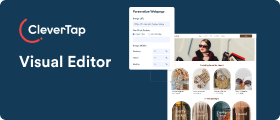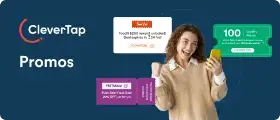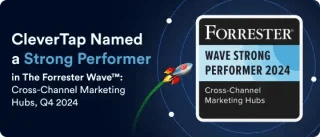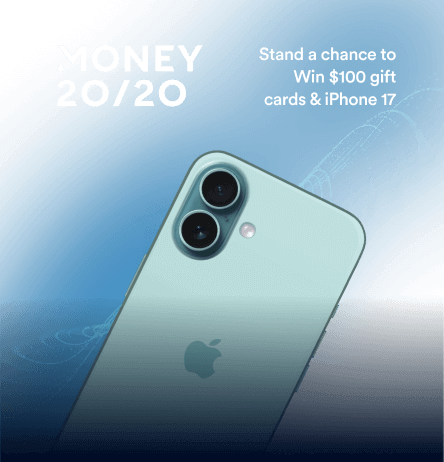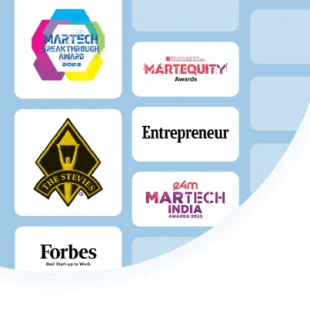Bringing in new users is just the beginning. The real challenge and opportunity lie in keeping them engaged. Without a thoughtful strategy to guide users after they sign up, even the most promising leads can slip away.
That’s where lifecycle email marketing proves its worth. By delivering the right email at each stage of the customer journey, brands can nurture relationships that deepen over time. These emails help users find value, feel supported, and stay connected to your product.
In this guide, we’ll walk through how lifecycle email marketing works, explore campaign examples across every stage, and show how CleverTap can help you turn strategy into action, at scale, without guesswork.
What Is Lifecycle Email Marketing?
Lifecycle email marketing refers to a strategy where email communications are tailored based on where the user is in their journey with your brand. Instead of sending the same content to your entire user base, you create contextual messages that respond to real-time behaviors such as signing up, exploring a feature, making a purchase, or lapsing in activity.
For example, someone who just downloaded your app should receive a completely different email than someone who has been a paying customer for six months. Lifecycle emails help bridge this gap by creating continuity in communication.
Why It Matters for Long-Term Customer Engagement
Every customer is different, and their emails should be too. When messages reflect what users are doing and what they need next, they feel more personal, more relevant, and more useful. That’s what makes lifecycle email marketing so effective. It’s about showing up at the right moment with something that actually helps.
And the results speak for themselves. According to some reports, automated emails average a 42.1% open rate, 5.4% click rate, and 1.9% conversion rate, all significantly higher than non-automated campaigns. In fact, one in three people who click on an automated message go on to make a purchase.
The takeaway? Sending more emails won’t move the needle. Sending better ones, tied to behavior and lifecycle stage, will.
Is Lifecycle Marketing the Same as Email Marketing?
Not quite. Email marketing is a channel. Lifecycle marketing is a strategy.
While traditional email campaigns often serve a single objective (such as promoting a sale), lifecycle marketing takes a broader view. It looks at how to move users through different phases from awareness to onboarding, engagement, loyalty, and even re-engagement.
How Email Fits Into the Bigger Picture:
Email is one of the best-performing channels for lifecycle marketing because of its versatility and depth. You can explain a concept, share a tutorial, or even tell a story that strengthens your relationship with the user. But lifecycle strategies don’t rely solely on email. If a user doesn’t engage with a welcome email, you might reach them via a push notification or in-app message the next day. Each touchpoint works in harmony with the others.
This channel orchestration creates a more cohesive user experience and increases the likelihood of conversion at every stage.
Why Lifecycle Email Marketing Is Critical for Growth
Most companies invest heavily in acquiring users, but without a thoughtful lifecycle strategy, that investment often goes to waste. Lifecycle emails help you nurture, retain, and grow users after acquisition, leading to stronger email marketing metrics across the board.
Benefits of Lifecycle Email Marketing:
- Improves Retention: Sends timely reminders and support content to keep users active. These emails reduce the risk of churn by addressing drop-off points before they escalate, helping users stay connected to your product experience.
- Accelerates Onboarding: Helps new users get started quickly, so they reach value before dropping off. A good onboarding sequence ensures users understand how to use your product and builds momentum early in the journey.
- Boosts Conversions: Uses behavioral triggers to nudge users when intent is highest, improving email conversion rates. Instead of blasting generic messages, these emails show up at the exact moment someone is ready to act, making them more likely to convert.
- Builds Loyalty: Deepens relationships over time through personalized content. Whether it’s celebrating a milestone or offering relevant tips, lifecycle emails can make users feel seen, supported, and valued, beyond just transactions.
- Scales Your Team’s Impact: Automates complex messaging journeys that would be impossible to manage manually. This lets your team focus on strategy and creativity while still delivering highly personalized communication at scale.
- Increases LTV (Lifetime Value): Keeps users engaged over the long term with upsells, renewals, and reactivation messages. Lifecycle emails help grow customer lifetime value far beyond the initial conversion.
The 5 Stages of the Customer Lifecycle for Email Marketing (And What to Send in Each)
These five customer lifecycle stages form the foundation for any successful email journey. Each represents a high-impact opportunity to connect with users through emails that feel timely, helpful, and aligned with their goals.
1. Acquisition (New Visitors or Leads)
This is your first impression. A user may have clicked an ad, browsed your website, or downloaded your app. They’re curious but not yet convinced. Your goal is to convert that curiosity into action.
At this stage, send an email that introduces your product or brand clearly and concisely. Reinforce trust with a testimonial, a press mention, or a product rating, and offer a compelling reason to act, whether that’s signing up, trying a demo, or downloading your app. Close with a strong CTA like “Try it free” or “Start exploring.”
Example subject lines:
- “Still thinking it over? Here’s what others are saying.”
- “You’re one click away from your first win.”
Include dynamic elements like product images, user ratings, or comparison charts to gently nudge toward sign-up.
2. Onboarding (New Sign-Ups)
Users are most likely to churn within the first 3 to 7 days. The onboarding stage is your chance to shorten time to value and reduce early friction. Think of these emails as a friendly guide, walking users through their first meaningful steps.
Your welcome email should set expectations while making it easy to take the next action. Follow up with a short sequence that introduces key features or walks the user through their initial setup. If someone skips an important step, like verifying their email or uploading a profile picture, trigger a contextual reminder to nudge them forward without overwhelming them.
Example subject lines:
- “Welcome to Healthly! Ready to set your first wellness goal?”
- “Your dashboard is waiting. Let’s personalize it.”
- “You’re one step away from unlocking [feature].”
Use progress bars or checklists inside your emails to gamify the user onboarding experience and build momentum.
Read in detail: 14 inspiring customer onboarding emails to boost engagement.
3. Engagement (Active Users)
Now that users are interacting with your app or product, your role shifts to deepening that engagement. The more they use key features, the more value they perceive, and the less likely they are to churn later.
To keep users engaged, send personalized emails based on what they’ve done so far. This could be a quick tip about a feature they’ve only used once, a deeper walkthrough of something they’ve tried briefly, or a milestone celebration like “You’ve completed 10 workouts.” Educational content, like use cases or short how-tos, can also add value at this stage.
Example subject lines:
- “You’re not using your dashboard’s full power yet.”
- “Three ways to get more out of [Feature X].”
- “Nice work. Here’s what you’ve unlocked.”
Include short videos, GIFs, or tooltips inside your emails to make learning feel effortless. Curiosity-driven subject lines often perform best here.
4. Retention (At-Risk Users)
Your analytics will tell you when users are starting to fade. Maybe their sessions are dropping, or a key event hasn’t fired in a while. Don’t wait too long. Proactive communication can bring them back before they churn.
When you notice activity slowing, send a check-in that acknowledges the drop in usage while offering helpful next steps. Avoid pressure tactics. Instead, gently remind them what they loved before or surface a feature they haven’t explored yet. A low-friction reentry point can go a long way in encouraging return.
Example subject lines:
- “Let’s pick up where you left off.”
- “Still interested in [Topic or Feature]? Here’s something new.”
- “Your saved items are still here. Just in case…”
Use friendly, encouraging language. Make reactivation feel like a helpful gesture, not a push. Offer shortcuts or one-click reengagement paths.
5. Winback (Lapsed Users)
If users haven’t engaged in weeks or months, they’re considered lapsed. But that doesn’t mean they’re lost. The key here is to reignite interest and remind them why they signed up in the first place, without guilt-tripping them using effective winback strategies.
Start with an emotional reframe like “We’ve missed you.” Then highlight what’s new since their last visit, such as product updates, design improvements, or fresh success stories. Consider offering a limited-time incentive, but only if it adds genuine value. The tone should feel like a warm invitation, not a sales push.
Example subject lines:
- “We’ve missed you. Want to see what’s new?”
- “Your account’s been quiet, but we’ve been busy.”
- “Come back and see what’s waiting for you.”
Use a visual-first format, such as a carousel or grid of feature updates, to make scanning the email easier. Add a personal touch by referencing their last activity or saved items.
Bonus: Loyalty & Advocacy
For some brands, the journey doesn’t end at winback. You might also send lifecycle emails to your most loyal users. These are users who’ve been active for a while, made repeat purchases, or referred others. These emails could offer a reward, early access to new features, or an invitation to a referral program. It’s not a must-have stage for every business, but if you have power users or regular buyers, it’s worth building a few messages that help turn loyalty into growth.
Example subject lines:
“Thanks for being a top user—something special’s waiting.”
“Early access: try our newest feature first.”
“Invite a friend, get a reward (you’ve earned it).”
Keep the tone warm and appreciative. Make it feel like a thank-you, not a transaction.
You might like to read: 19 advanced email marketing strategies to maximize lifecycle impact
Best Practices for Lifecycle Email Marketing
Creating an effective lifecycle strategy takes more than good copy. It involves architecture, segmentation, and iteration.
- Define Stage-Specific Goals: Set measurable outcomes for every stage, from acquisition to winback. Know what success looks like, whether it’s onboarding completion, feature adoption, or reactivation, and build your emails to support those goals.
- Automate with Behavior Triggers: Emails should be sent when a user acts (or doesn’t), not when you have time to send them. Use real-time triggers like sign-ups, feature usage, or drop-offs to ensure your emails feel relevant and responsive.
- Write with the User’s Intent in Mind: If someone abandoned their cart, address that hesitation directly. If they’ve reached a milestone, celebrate it sincerely. Your content should reflect what the user is doing and what they need next.
- Don’t Overwhelm: Respect your users’ inboxes. Fewer, more relevant messages always outperform frequent, generic ones. Think in terms of helpful nudges, not noise.
- Test Routinely: Everything from subject lines to send times can impact performance. Test regularly, and don’t just stop at open rates; optimize for engagement, conversions, and lifecycle impact too.
- Maintain Channel Consistency: Align your messaging across email, push, in-app, and SMS. When users get the same tone and direction across channels, the experience feels cohesive, not fragmented.
- Use Real-Time Data: Don’t rely solely on static segments. Build triggers based on live behaviors, like browsing history, usage frequency, or inactivity windows, to make emails more relevant and timely.
How to Launch Your First Lifecycle Email Marketing Campaign
Lifecycle strategy only works if you can execute it well. Here’s how to launch high-impact, automated email campaigns using CleverTap.
- Map the Full Customer Journey: Sketch every major interaction, from signup to referral. Understand what users are doing at each point and where they tend to drop off or hesitate.
- Segment Meaningfully: Don’t just rely on age or location. Use behavioral and psychographic insights to group users based on what they do, how often, and why. Segments like “high intent but inactive” or “first-time buyers” are far more actionable.
- Most lifecycle emails fall into two categories: one-time campaigns (e.g., promotions or announcements) and triggered emails (based on user actions or inaction). CleverTap supports both real-time and scheduled email automation.
- Write One Email per Stage: Start with one goal per stage (e.g., an onboarding email that gets users to complete setup). Keep the message focused, and avoid trying to say everything at once.
- Create a Trigger Logic: Define what action sends which email (e.g., 48 hours after install with no activity). Use triggers like “signup but no profile setup” or “added to cart but didn’t purchase” to ensure the email timing feels natural.
- Use CleverTap’s Journey Builder: This tool helps you visually map out automated flows. You can design complex, multi-stage campaigns without writing a single line of code, just drag, drop, and connect.
- Review and QA Your Workflows: Send test emails. Check for mobile responsiveness. Check for grammar errors, broken links, and logical flow. Even small issues can hurt credibility or performance.
- Track Metrics by Stage: Compare open rates, conversions, and churn per lifecycle phase. Identify where users are slipping and adjust your messaging accordingly.
To learn the technical setup, CleverTap offers a full guide to creating email messages and a detailed email configuration manual.
Learn more about email segmentation with 12 effective strategies.
How CleverTap Can Help Boost Your Lifecycle Email Campaign Performance
A strong lifecycle strategy is only as effective as your ability to act on it. CleverTap gives you the tools to seamlessly bridge the gap between planning and execution, so you can deliver timely, relevant communication at every stage of the user journey.
Precise Segmentation
With CleverTap, you can build highly specific audience segments using:
- Behavioral triggers: Cart abandonment, feature usage, content consumption
- User properties: Geography, device, subscription type, past purchases
- Lifecycle stage: New users, active, lapsing, churn-risk
- Predictive analytics: Purchase propensity, churn probability, RFM scoring
This enables personalized communication that aligns with each user’s context and journey stage.
Intelligent Campaign Automation
Using a visual journey builder and Lifecycle Optimizer, CleverTap lets marketers:
- Set event-based triggers for onboarding, upsell, retention, and reactivation
- Create multi-step drip campaigns without writing code
- Deliver messages in real time when users take specific actions (e.g., open an email but don’t click)
Automation ensures lifecycle emails are not just planned but executed instantly when they matter most.
Smart Optimization With Clever.AI
Clever.AI offers built-in intelligence that continually improves campaign performance:
- The platform helps you optimize for send times and delivers emails when each user is most likely to engage.
- Content suggestions via Scribe, using emotional tone and AI recommendations.
- CleverTap’s AI-powered decision node, IntelliNODE, dynamically adjusts journey paths based on performance to maximize outcomes.
These features enable marketers to create more effective campaigns with reduced manual effort.
True Omnichannel Orchestration
CleverTap seamlessly integrates email with 15+ other channels, like:
- Push Notifications
- SMS
- In-App Messages
- Web Messaging
Run coordinated lifecycle campaigns without switching tools, ensuring consistency and maximizing user impact across all touchpoints.
Advanced Analytics for Actionable Insights
CleverTap’s analytics engine provides:
- Real-time campaign dashboards: See opens, clicks, unsubscribes, and conversions
- Cohort & funnel reports: Analyze behavior over time and across stages
- Impact attribution: Link email performance directly to retention, revenue, or churn metrics
This empowers marketers to optimize continuously and improve email marketing ROI.
Built-in Templates and Interactive Email Features
Accelerate execution with:
- Prebuilt templates for key lifecycle goals, onboarding, winbacks, and engagement nudges
- Drag-and-drop email editors and HTML support
- AMP-enabled dynamic emails for interactive elements like forms, carousels, and live updates
You can go live faster while delivering rich, engaging inbox experiences.
Minimal Engineering Dependency
CleverTap is designed for marketers, not just developers. Once the initial integration is complete:
- All campaign setup, testing, segmentation, and optimization can be done without engineering help
- Templates, journeys, and content can be reused and adapted easily
- Built-in A/B testing and multivariate testing help iterate faster
This speeds up go-to-market and enables agile marketing operations.
Deliverability and Inbox Readiness
CleverTap helps ensure email effectiveness by offering:
- Deliverability monitoring tools and bounce tracking
- Support for Gmail annotations and dark mode previews
- Custom domain and IP reputation management when needed
You can ensure your emails not only get delivered, but also get opened and acted upon.
CleverTap gives you everything needed to turn lifecycle email into a powerful growth lever—from targeting and personalization to automation, testing, and analytics. With deep customer insights and intelligent orchestration, brands can move beyond basic campaign sends and build smart, scalable, and revenue-driving lifecycle journeys.
Power your lifecycle campaigns with an intelligent email marketing platform.
Turn Every Email Into a Strategic Touchpoint
Lifecycle email marketing isn’t just a set of triggered messages; it is a mindset shift. When communication is treated as part of the product experience, every email becomes a chance to support the user, guide them forward, and create moments of value.
The brands that excel at retention are the ones that stay present throughout the entire journey. With CleverTap’s automation and intelligence, you can deliver those messages with confidence, at scale, relevant, and in a timely manner. Book a demo to see how CleverTap can power your lifecycle email strategy.
Lifecycle Email Marketing FAQs
What is the difference between lifecycle and promotional emails?
Lifecycle emails are automated and triggered by user behavior. Promotional emails are typically sent in bulk and focused on short-term offers.
How many lifecycle emails should I send?
There’s no universal number. A good rule is to have at least one email per major lifecycle stage and let user behavior trigger additional messages.
Can I use the same email content across channels?
You can repurpose core content, but each channel has unique constraints. Adapt length, formatting, and tone to fit.
What lifecycle email marketing metrics should I track?
Beyond open and click rates, consider stage-specific performance metrics, including onboarding completion, day-7 retention, and winback reactivation.
Does CleverTap support A/B testing for lifecycle emails?
Yes. You can run tests on subject lines, content blocks, timing, and more, all within the platform interface.
Shivkumar M 
Head Product Launches, Adoption, & Evangelism.Expert in cross channel marketing strategies & platforms.
Free Customer Engagement Guides
Join our newsletter for actionable tips and proven strategies to grow your business and engage your customers.

